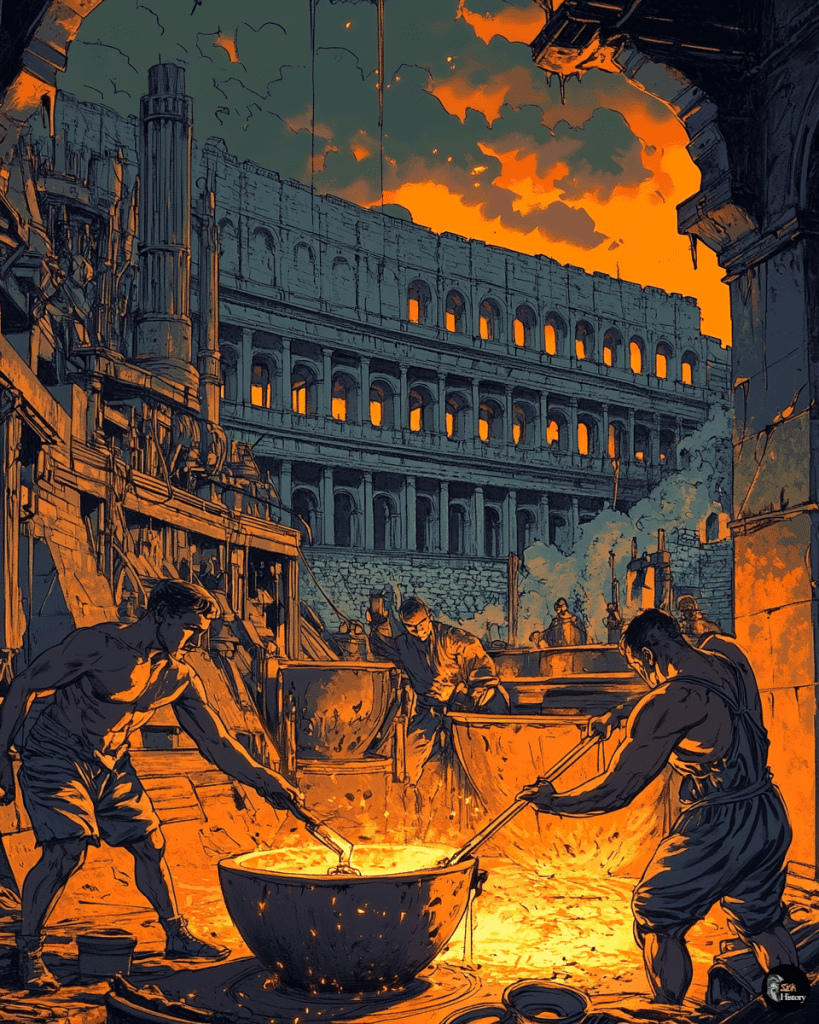A Hidden Record in Ice
Deep within the pristine layers of Greenland’s ice cap lies a startling secret from two millennia ago. Scientists have uncovered evidence of an atmospheric pollution spike that occurred around the beginning of the first century CE, rivaling levels not seen again until the Industrial Revolution in 1820. The culprit behind this ancient environmental impact? The mighty Roman Empire.
The Scale of Roman Industry
With a population of merely 60 million—less than a third of Europe’s in 1820—the Romans were producing staggering amounts of metal. Annual production estimates suggest up to 80,000 tonnes of lead, 15,000 tonnes of copper, and 10,000 tonnes of zinc. This industrial feat left its mark not just in Greenland but also in lake sediments across Sweden, Switzerland, and Croatia, marshes in southwest France, and even peat bogs in Britain.
Driven by Pleasure, Not War
What’s particularly fascinating about this pollution peak is its primary driver. Contrary to what one might expect, it wasn’t warfare or military needs that fueled this industrial boom. Instead, it was the Roman appetite for pleasure and consumption. Metal permeated every aspect of Roman life, from water pipes and building reinforcements to more luxurious items like drinking cups and dinner plates.
An Economic Golden Age
This period of peak metal production coincided with a surge in Mediterranean shipwrecks, suggesting a time of great economic expansion. The Romans had created a culture where those who could afford it built, consumed, and gave money to enable the masses to experience pleasure. This economic and cultural phenomenon painted a picture of a society at the height of its power and indulgence.
Efficiency Against the Odds
The efficiency with which the Romans extracted and processed these metals makes this achievement even more remarkable. Despite their technological limitations compared to 19th-century standards, they managed to match the metal output of a population more than three times their size, equipped with far more advanced technology.
The Price of Pleasure
However, like all unsustainable pursuits, this golden age of pleasure couldn’t last forever. While the phenomenon continued into the second century CE, new priorities had reshaped Roman culture by the fourth century. The emphasis shifted away from public displays of wealth and large-scale public benefactions, marking the end of this unique period in human history.
A Lesson from the Past
This ancient Roman pollution peak serves as a poignant reminder that our impact on the environment isn’t solely a modern concern. It highlights the incredible scale and efficiency of Roman industry, achieving with ancient technology what wouldn’t be matched for nearly two millennia. Moreover, it offers a cautionary tale about the environmental costs of unchecked consumption and the pursuit of pleasure.
As we grapple with our environmental challenges today, perhaps we can draw lessons from this distant mirror of our civilization. The story of Rome’s pollution peak reminds us that our choices in pursuit of comfort and luxury can have far-reaching consequences, leaving their mark not just on our immediate surroundings but on the air we breathe and the ice at the ends of the earth.

